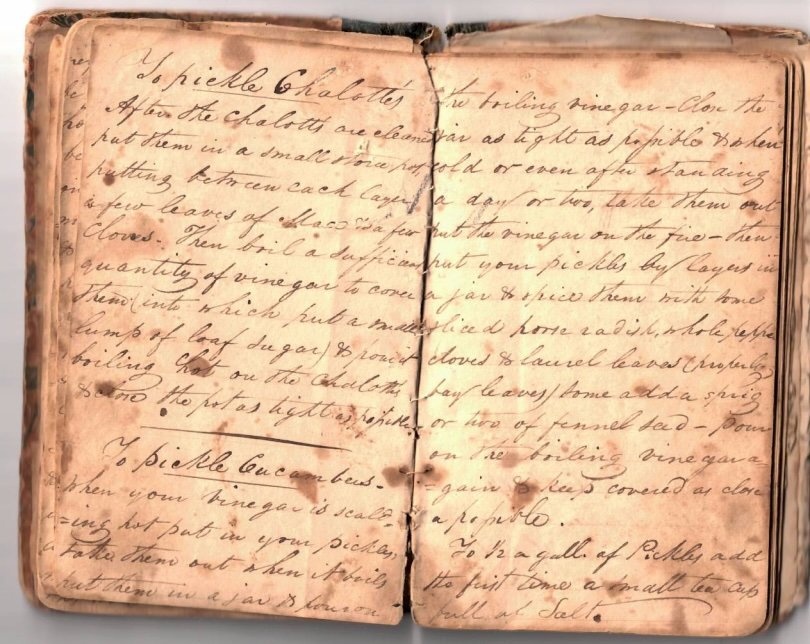Cooking from the Past: A Delicious Way to Get Kids Interested in History
Young Woman in the Kitchen, Andrea Commodi, 17th century.
I’m excited to share a creative way to spark your kids’ interest in history by combining two of my favorite things: learning about the past and cooking!
There’s something magical about connecting with history through food. Imagine tasting what the ancient Greeks enjoyed, or preparing a dish that might have graced the tables of Renaissance Italy or colonial America. Thanks to a wealth of online cookbooks, it’s easier than ever to find recipes from almost any era that fascinates you, whether it’s the Enlightenment, the Middle Ages, or even the time of the Founding Fathers. Another resource is Tasting History with Max Miller. His videos are entertaining, and he can help you adapt ingredients to the modern world.
Recipes for pickled Chalottes (shallots) and cucumbers from the Lincklaen family cookbook.
But how do we know what people really ate in the past? The answer lies in primary sources: old manuscripts, diaries, and cookbooks that have survived through the ages. Of course, tracking down these sources and deciphering ancient ingredients can be a challenge. That’s why modern historical cookbooks are such a treasure. Many authors have already done the hard work of researching, interpreting, and even updating these recipes so you can find the ingredients at your local grocery store.
Before you start your culinary journey through time, knowing a few things about historic cooking is helpful. For example, sugar wasn’t widely available in many regions, especially in the ancient world. Instead, honey was the go-to sweetener, so you’ll notice it pops up often in old recipes. Another fascinating fact is how limited people’s access to produce used to be. Today, we can buy grapes in the winter or enjoy tropical fruits year-round, but in the past, people cooked only with what was in season and available locally. North American staples like corn, beans, and squash were unknown in the Old World, and Italian recipes from the Renaissance won’t include tomatoes; in fact, they simply hadn’t arrived yet!
These little discoveries make history feel real and relevant. Cooking together gives you a natural way to talk about the past with your kids, turning mealtime into a fun, hands-on history lesson. With summer almost here, many families struggle to find ways to keep their children entertained and engaged in learning. Finding a historic recipe, learning about that period, then shopping for ingredients and making a meal or dish together is an excellent way to productively engage your children’s minds. They even learn life skills: reading a recipe, making a shopping list, cooking, and cleaning up!
You can also do this year-round, if you like. Think about the winter holiday season, where many families already spend time baking and preparing special treats. Why not try a historic recipe for bread or cookies this year? Bring your kids into the kitchen and explain how colonial families might have made the same dish. Challenge yourselves to skip modern conveniences, like kneading dough by hand or grinding spices with a mortar and pestle, just like people did centuries ago.
Some ingredients might be tricky, so planning becomes part of the adventure. If you stumble across an unfamiliar item, you can just research it together. You might even turn a trip to the store into a scavenger hunt, searching for each ingredient and learning about its origins as you go. This interactive approach transforms cooking into an engaging family activity and a memorable way to explore history together.
As summer settles in and screen time becomes more of a draw, spending an afternoon cooking a historic recipe is a creative, educational way to bond with your family. You don’t have to go back to ancient times, even dishes from the early twentieth century or mid-century America can spark great conversations about how people lived, what they ate, and how their lives differed from ours.




